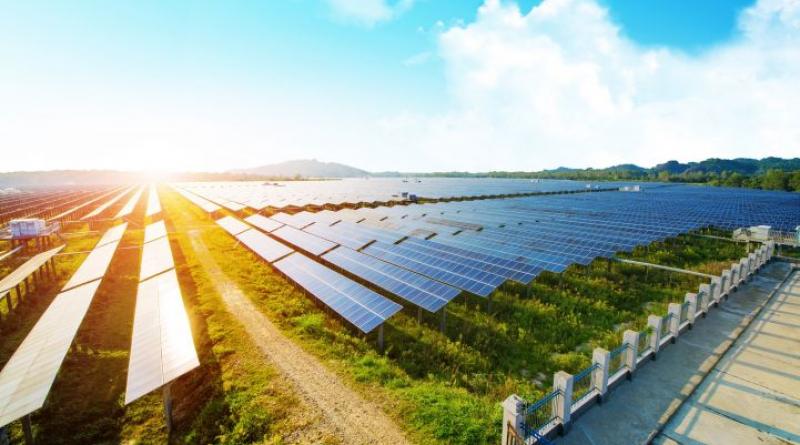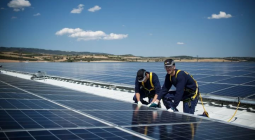Spain Tenders 3 Gigawatts of Renewables Under New Pay-as-Bid Model.

Solar and onshore wind get 1 gigawatt each while floating offshore wind seeks foothold.
Spain has launched a tender for up to 3.18 gigawatts of renewable generation in its first auction under a pay-as-bid model introduced earlier this year.
The model, similar to the contracts-for-difference program used in the U.K., aims to correct problems with auctions in 2016 and 2017. Those earlier auctions encouraged prices so low that developers essentially had to turn to merchant markets or bilateral power-purchase agreements to make a profit, said Madrid-based Brian Gaylord, principal analyst for Latin America and Southern Europe at Wood Mackenzie Power & Renewables.
The 2016 and 2017 auctions followed years of minimal capacity additions caused by an unfavorable regulatory environment, and they came with the threat of price revisions every three years. That led some bidders to use the auctions as a way of securing capacity in order to sell energy on the open market.
“You can’t have these auctions where there’s nothing being given of value,” Gaylord said in an interview. The auction review process “needed to be done."
Although entrants to the 2020 auction, which is due to close on Jan. 26, can, in theory, submit zero-subsidy bids, there is little incentive to do so because they will be bound to sell all their energy at their bidding price, with small adjustments related to wholesale market pricing.
The new rules have garnered a mixed reaction from renewable energy actors. Perhaps wary of the hostility that the sector has seen from past Spanish administrations, renewable energy associations have been broadly supportive of the auction scheme, said Gaylord.
The best part of the new regulatory framework is that it provides 12-year offtake agreements for solar and wind and underpins plans to procure 5 GW of renewable power a year over the next decade. “The industry has been asking for stability and visibility,” he said.
Concerns over the details of the auction framework
However, some observers have voiced concern over the details of the new rules. One worry raised by Javier Colón Cortegoso, manager of corporate power reseller Neuro Energía, is that auction winners will get paid for energy sold rather than energy produced.
This could lead to power producers trying to distort the market by not selling until prices are high or claiming that energy from cheap forms of production comes from more expensive plants.
Under the current scheme, “prices will come down initially,” Colón Cortegoso said in an email, “but with a better auction model, they could come down more by avoiding actions that could tend to manipulate the market and reduce uncertainty for retailers that serve final consumers.”
It is unclear whether these worries about the auction design are widespread or well founded. “We need auctions because offtakers are losing their appetite for Spanish [power-purchase agreements],” said one energy insider who asked not to be named. “Another [question] is whether the design is optimal.”
On the other hand, Jose María González Moya, managing director of the Spanish renewable energy association APPA, said in an interview that while the auction system had been criticized, “We don’t think it’s bad. It’s what we’ve been asking for all along.”
Solarpack, a PV developer with 295 megawatts of capacity in Spain, also welcomes the new auction framework.
“We think the publication of this regulation is very positive,” a company representative said in a statement to GTM. “Our view is that this mechanism assures the most competitive cost of renewable generation and at the same time provides the long-term visibility of revenue that [these kinds] of projects need. It allows renewables to develop with an adequate risk profile.”
A possible opening for floating offshore wind
This month’s tender includes a 1 GW allowance each for PV and onshore wind, with the remainder going to other technologies including concentrated solar power, hydro and biomass.
The availability of this extra gigawatt of capacity has led Spain’s wind sector to push for the establishment of a floating offshore industry.
A study by European innovation body EIT InnoEnergy and consulting firm Enzen claims that the Iberian Peninsula, whose waters are too deep to accommodate fixed-bottom offshore wind, could install up to 22 GW of capacity on floating platforms by 2050, creating between 43,669 and 77,825 jobs.
“We have to create a mechanism, based on best practice, to develop investment in offshore wind in Spain in an orderly way,” said Juan Virgilio Márquez López, CEO of the wind business association AEE, in a webinar. “And for that we need auctions. Other countries have a clear view of this.”
22 December 2020
gtm





